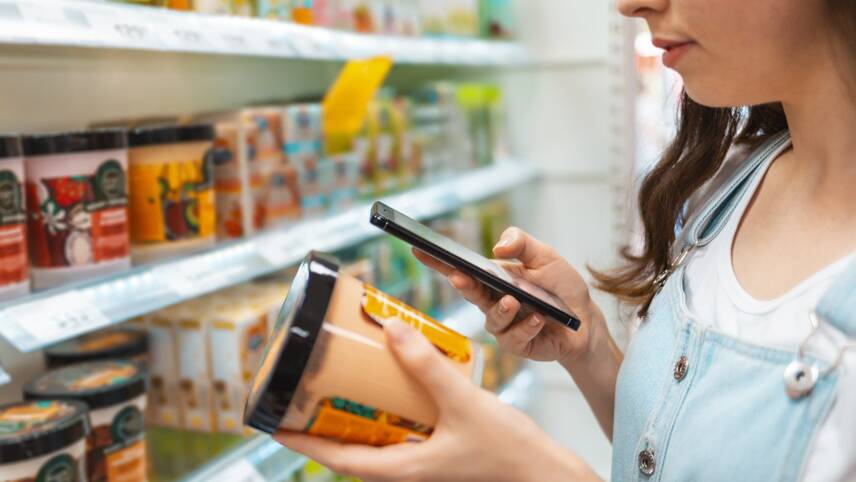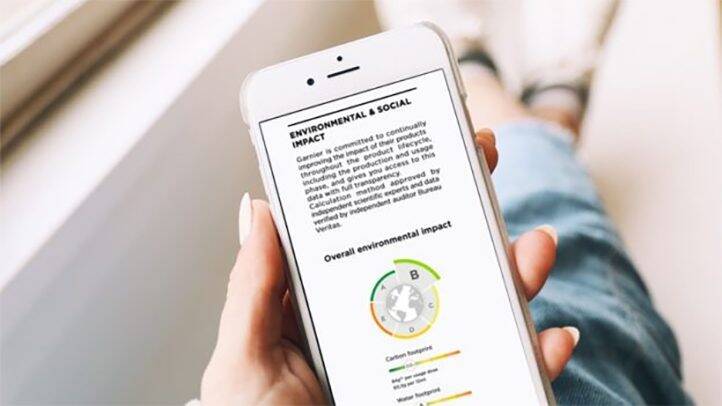Register for free and continue reading
Join our growing army of changemakers and get unlimited access to our premium content

The trend of consumers wanting more information about the environmental impact of their shopping has been tracked for several years now. In terms of on-pack labelling specifically, one study from the Carbon Trust, conducted in 2020, found that two-thirds of shoppers in Europe would welcome the introduction of ecolabels that convey the carbon footprint of products. Carbon Trust described the findings as evidence of a “resurgence” in support for carbon labels, which became popular in the late 2000s and early 2010s.
This so-called resurgence is welcome news, given that climate scientists have repeatedly stated the importance of behaviour change at scale to avert the worst impacts of the climate crisis. The Intergovernmental Panel on Climate Change’s (IPCC) most recent report on mitigation concluded that behaviour changes could deliver 40-70% of the emissions reductions needed through to 2050. Important changes include the adoption of low-carbon heating, electric and active transport and low-carbon diets.
Despite the increased uptake of net-zero emissions targets from nations and regions, policymakers across the world have largely avoided taking steps to introduce mandatory carbon labelling on products, or other ecolabels. Perhaps the strongest requirement in this field will be the EU’s product environmental footprint requirements, which are set to be introduced through the bloc’s upcoming sustainable product initiative. Manufacturers of certain products, including electronics, will need to produce digital product passports containing information about embodied carbon and energy efficiency once the initiative launches.
The absence of regulation to date means there is now something of a proliferation of ecolabel schemes. It is estimated that there are now more than 460 schemes in use globally. Most of them do not convey data to consumers on-pack, but evidence certifications, such as the Forest Stewardship Council (FSC) and Marine Stewardship Council (MSC).
A time may well come when products are labelled for their environmental impact, just as food and beverages are labelled for their nutritional value. But, in the broad absence of policy and regulation, many businesses are striving to get ahead of the curve nonetheless. Here, edie highlights some of them.
Foundation Earth
June 2021 saw several of the UK and EU’s biggest food retail businesses signing up to pilot a new eco-labelling scheme for their groceries and food-to-go, including Nestle, Sainsbury’s, Marks & Spencer (M&S), Costa Coffee, Tyson and VeeTee Rice. Several plant-based small brands also signed up.
The scheme came from non-profit Foundation Earth. Researchers at WWF and Oxford University informed the labelling system, which is perhaps one of the broadest in the food sector. It covers the environmental impact of all parts of the upstream value chain for food, including carbon emissions, water used, water pollution and biodiversity impact. An overall grade (A+ being the best, G being the worst) is assigned to products and communicated to shoppers using a letter grade and a traffic light colour system.
As planned, the first front-of-pack scores were trialled in 2021, with plant-based brand The Mighty Pea being one of the first adopters. Further rollouts are planned for 2022. The past ten months have seen a whole host of other businesses voicing their support for Foundation Earth’s approach, including PepsiCo, Danone, Starbucks, Unilever, Aldi, The Co-Op, Tesco, Morrisons, Waitrose, Cranswick and Abel & Cole.
Compass Group
Separately, catering giant Compass Group has also introduced eco-labels that convey the emissions, water impact and biodiversity impact of food. The firm began adding eco-labels to all meals served through its business and industry (B&I) arm in the UK and Ireland from last October.
The methodology for calculating the impact of foods was developed by researchers at the University of Oxford’s Livestock, Environment and People (LEAP) group.
Compass Group received mixed reactions for its menu carbon labels at COP26v, with many welcoming the move and some plant-based advocacy groups arguing that all options should have been meat-free and lower in carbon.
Mindful chef
B Corp certified recipe box firm Mindful Chef claims it is the first in the sector to have introduced carbon labelling. Mindful Chef is also taking inspiration from WWF for its approach, using the NGO’s definitions of a ‘low-carbon’ dish and ‘low-carbon’ diet.
From December 2021, Mindful Chef began conveying the life-cycle carbon footprint of its meals on-pack, including information on a whole-recipe basis and a per-portion basis. The firm’s consultancy partner for this workstream is ClimatePartner.
Wahaca
Mexican-inspired restaurant chain Wahaca is one of the latest food and drink businesses to introduce ecolabels. From 6 April 2022 – the date from which large restaurant chains in the UK were mandated to list calorie content on menus – the business began adding carbon labels to its menus.
Wahaca has worked with startup Klimato, which specialises in measuring and communicating the climate impact of food, to develop the labelling system. Dishes are labelled either high, low or medium carbon, based on their value-chain emissions.
Eco-Beauty Score Consortium

Image: Garnier
Eco-label uptake has perhaps been the most visible and advanced in the food and beverage sector. In addition to the businesses mentioned above, the labelling approach is also supported by the likes of Upfield and Quorn Foods.
But the health, beauty and fashion sectors are also undergoing a growing level of eco-label uptake. One of the biggest schemes in the beauty space is the Eco-Beauty Score Consortium. The Consortium was first founded in September 2021v by Unilever, L’Oreal, Henkel, LVMH and Body Shop owner Natura & Co, as well as industry body Cosmetics Europe.
Since then, the Consortium has grown and now has support from more than 35 businesses. Newer supporters include Procter & Gamble (P&G), The Estee Lauder Companies and Coty. Databases detailing the environmental impacts of common product ingredients and packaging materials have been created and expanded, and environmental impact assessment methodologies are being finalised.
The Consortium’s labelling system is based on one first piloted by L’Oreal, through its Garnier brand. It assigns an overall letter grade (A-E) to each product, based on lifecycle impacts as calculated in line with the EU’s product environmental footprint principles.
Allbirds and Adidas
Footwear and clothing brand Allbirds has been listing the carbon impact of each product since 2020 and uses the fact that the average product carbon footprint is 7.6kg of CO2e, compared with an industry average of 12.5kg, as a selling point.
As it works towards halving the carbon footprint of its products by 2025 and bringing them as close to zero as possible by 2030, Allbirds has made headlines because of its work with Adidas on low-carbon shoes. The two companies announced that they were collaborating on a vision to develop the world’s lowest carbon sports show to date in May 2020. In May 2021, the first prototype was unveiled, with a footprint of 2.94kg per pair.
There is no news yet on whether Adidas will add ecolabels to additional products.



Please login or Register to leave a comment.